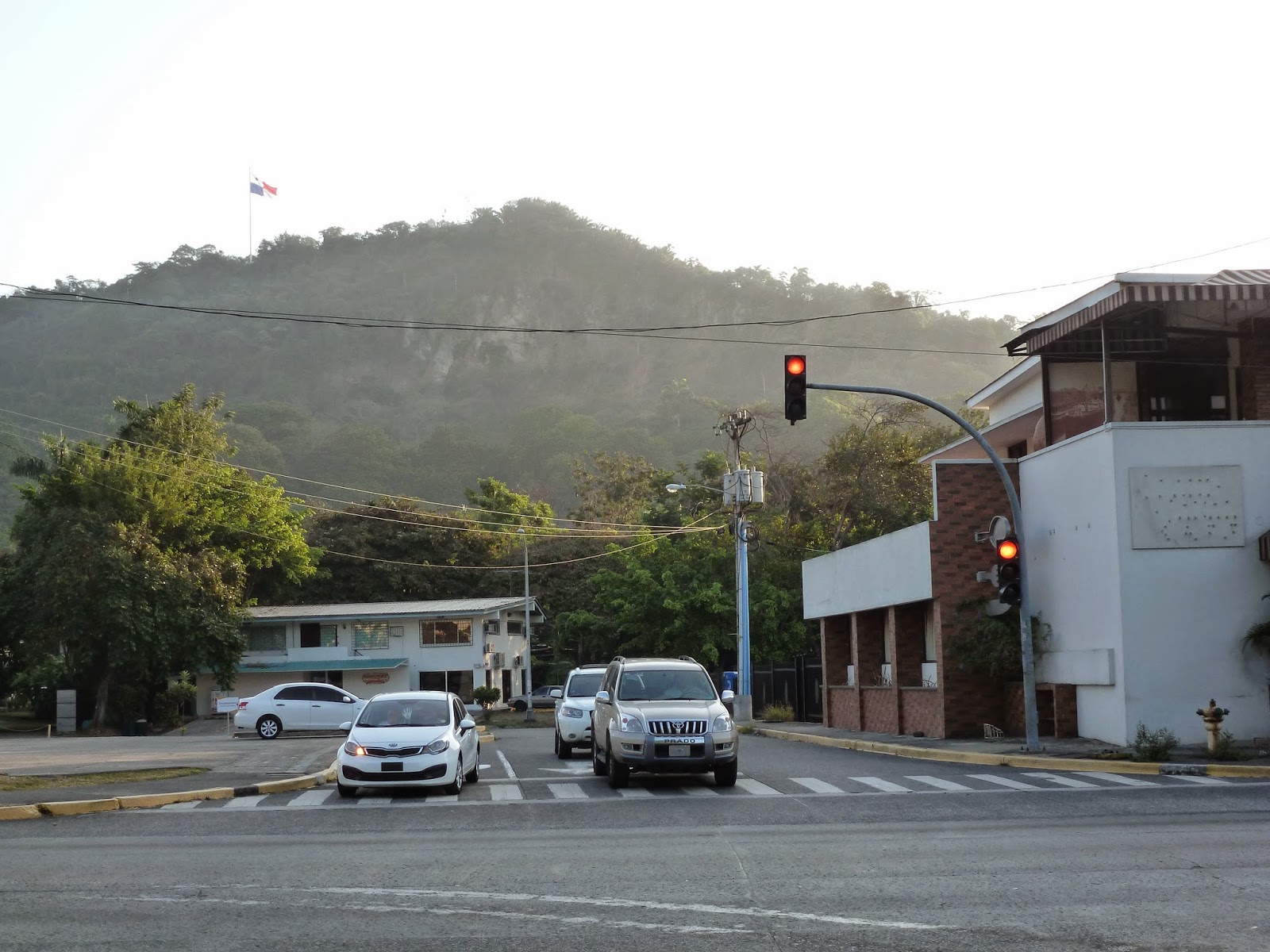Those of us who recall their American history know that the transcontinental railroad was completed when the Central Pacific Railroad met up with the Union Pacific Railroad at Promontory Point, Utah on May 10th, 1869 with the ceremonial driving of the golden spike (this, of course, was quickly removed and replaced with a regular iron one). Our Golden Spike was the completion of the 'First Flush' systems on each of the tanks. I'll try to keep this brief. One of the crucial elements that separates our system from rainwater catchment systems currently used on the island is the 'First Flush': When rain falls, the first several minutes wash over he dry surface of the roof picking up any debris that is present on the roof (such as dust, leaves, bird droppings) and delivering into a storage tank (recall the photo of the woman drawing a dipper of water from the drum beneath a downspout). Obviously a serious source of contamination as well as a source of nutrient for any bacteria already there. The First Flush system captures the first few gallons of runoff and diverts it into a separate waste pipe; once that pipe is full incoming water flows through a Y pipe into a side pipe into the main tank, separating the first few gallons of dirty water from the remaining clean water. This is all best illustrated in the photos below.



In the top photo the system is partly in place - one can see the S-bend coming off the roof connecting to the (unfinished limb of the) Y branch then dropping into the vertical drain pipe. At the bottom, there is a 90 degree elbow and the pipe then runs horizontally (with a slight downward slope) for an additional 10 feet (seen best in the bottom photo). All of this length is necessary to create water storage for the 'first flush' effect. Note the homemade ladder in the middle and lower photos.
This is pretty much basic plumbing, but there is one little tricky point here. Clean water from each rain event runs into the main tank. once the first flush storage pipes are full. If the storage pipe remains full (undrained) when the next rain event takes place, the new dirty water will simply spill into the clean tank making the whole thing useless. So what's the point, you ask? Well, there needs to be a mechanism to drain that pipe between each significant rainfall. The simplest would be to have a person open a valve at the lowest point of the pipe, allow the water to empty, then close the valve. This, however, relies upon consistent human effort. Sort of like me hoping my kids feed the cat while I am away (which is, incidentally, the motivating factor in the automated cat food dispense that I am working on with Leah's housemate Mitch). No, this needs to be automated somehow, but that is not as easy as one might think. The simplest method is to drill a hole at the end of the horizontal fallout pipe which allows water to escape, albeit more slowly than it flows in. Sizing this hole is based upon a series of volumetric flow equations well established in hydraulics, but which no one bothered to do prior to implementation. Oops.
Well, one can learn alot from trial-and-error. We first tested the system by drilling
a pair of 3/8" holes then pouring about 15 gallons of water down the standpipe (remember folks, no running water here so running those 15 gallons meant hauling 4 buckets up the ladder and tilting them over our heads to pur it into the pipe. You try it.). What we learned was that those two holes drained that pipe like a toilet flushing.
Whoosh. Understand that while the pipe absolutely needs to drain between each rain event, if it drains to fast, it will never reach the top of the Y pipe and will never add water into the tank. It's got to drain the pipe but neither too slowly nor too quickly.
So now we have another problem. Our drain pipe now has two huge honking holes in it and we can't just run up to Lowes to buy a new piece. So we caulked the whole and wrapped them with duck tape and rethought our strategy. This time we would start with the smallest bit we had and work up, if need be. We drilled
one hole with a 1/16" bit then repeated the fill-it-up test (yes, another 15 gallons up the ladder. This time we got a reasonable modest flow that would slow as the level in the vertical pipe fell.
The last remaining tasks were the installation of the spigots, pouring a pair of small concrete pads under the spigots, and hanging the corrugated zinc sides. And with that, the construction part of this project was finished. Given a 5 working day schedule, we finished in 4 & 1/2 days or 10% ahead of schedule. I believe my crew is entitled to a performance bonus.






















